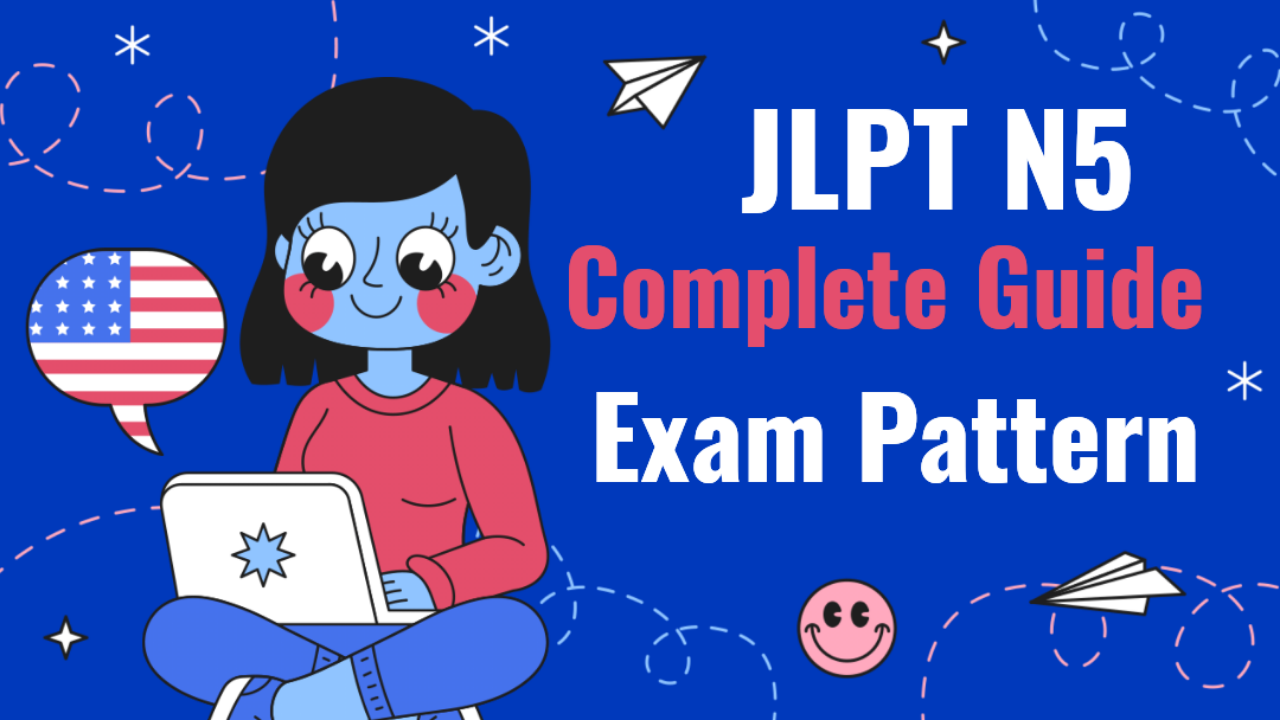Complete Guide to JLPT N5 Exam Pattern
The JLPT (Japanese-Language Proficiency Test) is a globally recognized test for non-native speakers of Japanese. It evaluates and certifies proficiency in Japanese at five levels, with N5 being the most basic and N1 being the most advanced. If you're preparing for the JLPT N5 exam, it’s important to understand its pattern thoroughly to optimize your study plan.
In this post, we’ll cover everything you need to know about the JLPT N5 exam pattern. Whether you’re new to the Japanese language or aiming to earn your first JLPT certificate, this guide will provide a clear roadmap.
Overview of JLPT N5 Exam
JLPT N5 is designed for beginners. It tests your ability to understand basic Japanese, mainly focusing on everyday phrases, grammar, and kanji characters. The exam is divided into three sections:
- Language Knowledge (Vocabulary and Grammar)
- Reading
- Listening
Each section has its own weightage and time limit, and you must perform well across all three areas to pass the exam. Below, we break down each section and what you can expect from it.
1. Language Knowledge (Vocabulary and Grammar)
This section measures your understanding of the vocabulary and basic grammar used in daily conversations. The primary goal is to see if you can recognize and understand simple words, phrases, and sentences in both written and spoken formats.
-
Vocabulary: You’ll be tested on approximately 800 words. This includes hiragana, katakana, and around 100 basic kanji. The questions involve recognizing words, completing sentences, and understanding their usage in context.
-
Grammar: This part tests your knowledge of basic grammatical structures, such as particles, verb conjugations, adjectives, and sentence patterns. You need to demonstrate an understanding of sentence formation and comprehension in basic dialogues.
-
Question Types: Multiple-choice questions that ask you to fill in the blanks with appropriate words or grammar points.
2. Reading
In the reading section, your ability to comprehend simple written texts is evaluated. The material includes:
- Short sentences or passages: These are everyday texts like signs, simple descriptions, or small articles.
- Understanding instructions or basic information: The test will include questions about reading notices, menus, or directions.
Your objective is to show that you can grasp the general meaning of short written passages and answer questions related to their content.
3. Listening
The listening section evaluates your ability to understand spoken Japanese in everyday situations. This portion involves listening to short conversations or announcements, after which you’ll answer questions based on what you’ve heard.
- Question Types:
- Short dialogues
- Descriptions of daily activities
- Simple announcements
- Listening Challenges: The conversations are typically slow to moderately paced, making it easier for beginners to follow. However, you must focus on key details such as dates, times, or locations mentioned in the dialogues.
This section tests your ability to pick up key information and general comprehension without having to understand every word.
Time Allocation
The JLPT N5 exam lasts for around 105 minutes in total. Below is the typical breakdown of time per section:
- Vocabulary (Language Knowledge): 25 minutes
- Grammar and Reading (Language Knowledge and Reading): 50 minutes
- Listening: 30 minutes
Each section has a passing score requirement, and the overall pass marks are divided into individual sections as well. Scoring well in all sections is essential, as the final pass or fail result depends on your cumulative score.
Scoring
The JLPT N5 uses a scaled scoring system. The total score for the exam ranges from 0 to 180 points, and the breakdown for each section is as follows:
- Language Knowledge (Vocabulary/Grammar): 0–60 points
- Reading: 0–60 points
- Listening: 0–60 points
You need a minimum score of 80 out of 180 to pass the JLPT N5 exam. Additionally, each section has its own minimum passing requirement, so you must score well in all parts of the test.
How to Prepare for the JLPT N5 Exam
Here are some tips to help you succeed in the JLPT N5:
- Study Vocabulary: Learn around 800 words, focusing on commonly used terms and phrases.
- Master Basic Kanji: You should be familiar with approximately 100 kanji characters.
- Practice Grammar: Understand the basic grammar rules and sentence structures, especially how particles and verb forms work in sentences.
- Improve Listening Skills: Regularly listen to beginner-level Japanese podcasts, TV shows, or practice tests to sharpen your comprehension.
- Use Practice Tests: Taking mock exams will help you become familiar with the format and timing, allowing you to manage your time better during the actual test.
For more detailed guidance and study resources, check out Get Help Online, where you can find additional practice materials and tips to boost your chances of passing.
Conclusion
The JLPT N5 exam is the first stepping stone toward mastering the Japanese language. Understanding the exam pattern is crucial to your preparation. By focusing on vocabulary, grammar, reading, and listening skills, you’ll be well on your way to acing the test.
Good luck with your JLPT N5 journey, and remember that consistent practice is key to success!
For more tips and resources, visit Get Help Online.





















